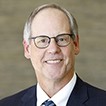DOL Revises Paid Leave Requirements Under FFCRA
September 14, 2020
By: Boyd A. Byers
Foulston has produced a series of issue alerts as we continue to monitor the evolving COVID-19 situation and provide additional guidance. Please find all updates and our latest resources available here.
On Sept. 11, 2020, the U.S. Department of Labor issued revisions to its regulations that implement the paid sick leave and expanded family and medical leave provisions of the Families First Coronavirus Response Act (FFCRA). The revised rule will take effect on Sept. 16, 2020, when it will be published in official form.
Revised Regulations Respond to Court Ruling
These revisions were made to clarify workers’ rights and employers’ responsibilities under the FFCRA’s paid leave provisions in light of a New York court’s order finding portions of the initial regulations invalid. Specifically, the court set aside four parts of the regulations: (1) the requirement that paid sick leave and expanded family and medical leave are available only if an employee otherwise has work from which to take leave; (2) the requirement that an employee may take FFCRA leave intermittently only with employer approval; (3) the definition of an employee who is a “health care provider,” whom an employer may exclude from being eligible for FFCRA leave; and (4) the statement that employees who take FFCRA leave must provide their employers with certain documentation before taking leave.
In its revised regulations, DOL does the following:
- Reaffirms and provides additional explanation for the requirement that employees may take FFCRA leave only if work would otherwise be available to them.
- Reaffirms and provides additional explanation for the requirement that an employee must obtain employer approval to take FFCRA leave intermittently.
- Revises the definition of “health care provider” to include only employees who meet the definition of that term under the Family and Medical Leave Act regulations or who are employed to provide diagnostic services, preventative services, treatment services, or other services that are integrated with and necessary to the provision of patient care which, if not provided, would adversely impact patient care.
- Clarifies that employees must provide required documentation supporting their need for FFCRA leave to their employers as soon as practicable, and corrected an inconsistency regarding when employees may be required to provide notice of a need to take expanded family and medical leave to their employers.
Revised Definition of “Health Care Provider”
The FFCRA provides that an employer of an employee who is a “health care provider” may elect to exclude such employee from the Act’s leave requirements. The initial regulations broadly defined health care provider to include any person employed at any doctor’s office, hospital, health care enter, clinic, medical school, local health department or agency, nursing facility, retirement facility, nursing home, home health care provider, any facility that performs laboratory or medical testing, pharmacy, or any similar employer.
But the revised regulations are much more limited. Now, for purposes of defining the set of workers an employer may exclude from taking FFCRA leave, the definition of health care provider includes two groups:
The first group is anyone who is a licensed doctor of medicine, nurse practitioner, or other health care provider permitted to issue a certification for purposes of the FMLA.
The second group is any other employee who is capable of providing health care services, meaning he or she is employed to provide diagnostic services, preventive services, treatment services, or other services that are integrated with and necessary to the provision of patient care and, if not provided, would adversely impact patient care. This group includes employees who provide direct diagnostic, preventive, treatment, or other patient care services, such as nurses, nurse assistants, and medical technicians. It also includes employees who directly assist or are supervised by a direct provider of diagnostic, preventive, treatment, or other patient care services. It also includes employees who do not provide direct heath care services to a patient but are otherwise integrated into and necessary to the provision those services, such as laboratory technicians who processes test results necessary to diagnosis and treatment.
Employees who do not provide health care services, as described above, are not health care providers, even if their services could affect the provision of health care services. For example, IT professionals, building maintenance staff, human resources personnel, cooks, food services workers, records managers, consultants, and billers are not health care providers, even if they work at a hospital or health care facility.
In the preamble to the amended regulations, DOL encourages employers to be judicious when using the new definition to exempt health care providers from the provisions of the FFCRA. As an example, DOL explains that an employer may decide to exempt these employees from FFCRA leave for caring for a family member, but choose to provide them paid sick leave in the case of their own COVID-19 illness.
Revised Notice and Documentation Requirements
DOL’s initial regulations provided that required documentation to support the employee’s need for FFCRA leave must be provided “prior to” taking leave. The amendments clarify that this documentation need not be given “prior to” taking FFCRA leave, but rather may be given as soon as practicable, which in most cases will be when the employee provides notice. As before, an employer may require an employee to furnish the following information: (1) the employee’s name; (2) the dates for which leave is requested; (3) the qualifying reason for leave; (4) an oral or written statement that the employee is unable to work; (5) the name of the government entity that issued the quarantine or isolation order (if applicable); (6) the name of the health care provider who advised the employee, or the individual being cared for, to self-quarantine due to concerns related to COVID-19 (if applicable); and (7)(a) the name of the son or daughter being cared for, (b) the name of the school, place of care, or child care provider that has closed or become unavailable, and (c) a representation that no other suitable person will be caring for the son or daughter during the period for which the employee takes paid sick leave or expanded family and medical leave (if applicable).
The revised regulations also correct an inconsistency regarding the timing of notice for employees who take expanded family and medical leave. For paid sick leave under the FFCRA, notice may not be required in advance, and may only be required after the first workday (or portion thereof) for which an employee takes leave. However, for expanded family and medical leave, if the need for leave is foreseeable, notice generally must be provided before taking leave. For example, if an employee learns on Monday morning before work that his or her child’s school will close on Tuesday due to COVID-19 related reasons, the employee must notify his or her employer as soon as practicable — likely on Monday. But if the need for expanded family and medical leave is not foreseeable — for instance, if the employee learns of the school’s closure on Tuesday after reporting for work — the employee may begin to take leave without giving prior notice, but must still give notice as soon as practicable.
Summary
For the most part, the DOL’s revised regulations reaffirm and further explain the positions set forth in the initial regulations issued on Apr. 1, 2020, with the clarification that notice and documentation for paid sick leave and unforeseeable expanded family and medical leave must be provided as soon as practicable, which may not necessarily be prior to starting leave. But, for health care employers, the regulations significantly limit the type of employees they may elect to exclude from the FFCRA’s leave requirements. Employers who may be impacted by these regulatory changes should consult legal counsel and promptly review and revise their policies and procedures to ensure compliance.
For More Information
If you have questions or want more information regarding these regulations, contact your legal counsel. If you do not have regular counsel for such matters, Foulston Siefkin LLP would welcome the opportunity to work with you to meet your specific business needs. For more information, contact Boyd Byers at 316.291.9716 or bbyers@foulston.com. For more information on the firm, please visit our website at www.foulston.com.
Established in 1919, Foulston Siefkin is the largest law firm in Kansas. With offices in Wichita, Kansas City, and Topeka, Foulston provides a full range of legal services to clients in the areas of administrative & regulatory; antitrust & trade regulation; appellate law; banking & financial services; business & corporate; construction; creditors’ rights & bankruptcy; e-commerce; education & public entity; elder law; emerging small business; employee benefits & ERISA; employment & labor; energy; environmental; ERISA litigation; estate planning & probate; family business enterprise; franchise & distribution; government investigations & white collar defense; governmental liability; government relations & public policy; healthcare; immigration; insurance regulatory; intellectual property; litigation & disputes; long-term care; mediation/dispute resolution; mergers & acquisitions; Native American law; oil, gas & minerals; OSHA; privacy & data security; private equity & venture capital; product liability; professional malpractice; real estate; securities & corporate finance; supply chain management; tax exempt organizations; taxation; trade secret & noncompete litigation; water rights; and wind & solar energy.
Resources
Sign up to receive these issue alerts straight to your inbox here.
This update has been prepared by Foulston Siefkin LLP for informational purposes only. It is not a legal opinion; it does not provide legal advice for any purpose; and it neither creates nor constitutes evidence of an attorney-client relationship.






